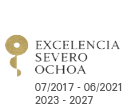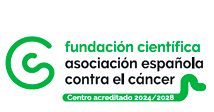
2025/01/09
Extracellular Vesicles as messengers in cancer cachexia and their impact on the body
Cancer cachexia is a metabolic syndrome that causes involuntary loss of muscle and fat mass, impacting patients' quality of life and prognosis.
A scientific review published in Extracellular Vesicles in Circulating Nucleic Acids highlights the crucial role of extracellular vesicles (EVs) in the communication between tumors and adipose tissue, which is key in cancer cachexia.
This discovery opens new therapeutic opportunities to treat cachexia and improve patients' quality of life.
Cancer cachexia, a metabolic syndrome affecting more than half of patients with advanced cancer, has been thoroughly analyzed in a recent review published in Extracellular Vesicles in Circulating Nucleic Acids. This study highlights a key mechanism that could help explain how cancer causes involuntary muscle and fat loss: cellular communication mediated by extracellular vesicles (EVs).
Cancer cachexia not only impacts the quality of life of patients, but it is also associated with worse prognosis and higher mortality, as it is present in 20%-30% of advanced cancer cases. Traditionally, this syndrome has been understood as a phenomenon where tumors alter the body's metabolism, but a new approach shows that this interaction is much more complex and dynamic than previously thought. In this context, EVs are presented as the biochemical complex messengers responsible for communication between tumor cells and the adipose tissue, two key players for the development of cachexia.
Tumor cells secrete vesicles loaded with a variety of molecules, such as hormones (adrenomedullin, PTHrP), pro-inflammatory cytokines (IL-6), and microRNAs (such as miR-1304-3p and miR-155), which can alter the behavior of adipocytes (fat cells). Those EVs trigger processes, including lipolysis (fat breakdown) and the transformation of white adipocytes into brown-like fat cells, a type of tissue that consumes energy. This change in the adipocytes directly contributes to fat mass loss, one of the main features of cachexia.
Moreover, the process continues progressing. Adipocytes also release their own vesicles that influence tumor cells. These EVs contain molecules able to reprogram the tumor's metabolism, promoting its growth and ability to form metastases. In this molecular interplay between the tumor and the adipocytes, both tissues "train" and modify each other to promote disease progression.
This knowledge opens the door to the conception of new therapeutic strategies. Understanding how these vesicles modulate the cellular behavior could provide new treatments that interrupt the tumor-adipose communication, thus slowing down the progression of cachexia. Additionally, therapies targeting the microRNAs or proteins present in the EVs could also offer a novel approach to combat cachexia, thereby improving the quality of life for patients.
The research team, including members of the Exosomes Group at CIC bioGUNE, member of BRTA, and led by Dr. Juan Manuel Falcón, Ikerbasque Professor and CIBERehd, has compiled the latest knowledge on the role of extracellular vesicles (EVs) in the communication between tumors and adipose tissue. This work highlights the relevance of these small messengers in the molecular mechanisms driving cancer-associated cachexia.
“It is clear that the exosomes play an active role in cachexia. Still, much work is needed to be done to discover the specific mechanism of action. In fact, our current co-supervised PhD project that we are developing together with our colleagues at i3S-IPATIMUP (Porto, Portugal) is focused on gaining light into it”, highlights Dr. Falcón.
Reference: Cátia C. Ramos, José Pires, Esperanza Gonzalez, Clara Garcia-Vallicrosa, Celso A. Reis, Juan M. Falcon-Perez, Daniela Freitas. Extracellular vesicles in tumor-adipose tissue crosstalk: key drivers and therapeutic targets in cancer cachexia. Extracell Vesicles Circ Nucleic Acids. DOI: 10.20517/evcna.2024.36.
About CIC bioGUNE
The Centre for Cooperative Research in Biosciences (CIC bioGUNE), member of the Basque Research & Technology Alliance (BRTA), located in the Bizkaia Technology Park, is a biomedical research organisation conducting cutting-edge research at the interface between structural, molecular and cell biology, with a particular focus on generating knowledge on the molecular bases of disease, for use in the development of new diagnostic methods and advanced therapies.
About Ikerbasque
Ikerbasque - Basque Foundation for Science - is the result of an initiative of the Department of Education of the Basque Government that aims to reinforce the commitment to scientific research by attracting, recovering and consolidating excellent researchers from all over the world. Currently, it is a consolidated organization that has 290 researchers/s, who develop their work in all fields of knowledge.
About BRTA
BRTA is an alliance of 4 collaborative research centres (CIC bioGUNE, CIC nanoGUNE, CIC biomaGUNE y CIC energiGUNE) and 13 technology centres (Azterlan, Azti, Ceit, Cidetec, Gaiker, Ideko, Ikerlan, Leartiker, Lortek, Neiker, Tecnalia, Tekniker y Vicomtech) with the main objective of developing advanced technological solutions for the Basque corporate fabric.
With the support of the Basque Government, the SPRI Group and the Provincial Councils of the three territories, the alliance seeks to promote collaboration between the research centres, strengthen the conditions to generate and transfer knowledge to companies, contributing to their competitiveness and outspreading the Basque scientific-technological capacity abroad.
BRTA has a workforce of 3,500 professionals, executes 22% of the Basque Country's R&D investment, registers an annual turnover of more than 300 million euros and generates 100 European and international patents per year.
See a large version of the first picture





